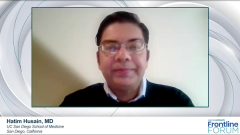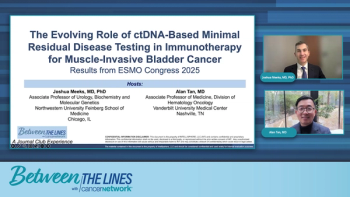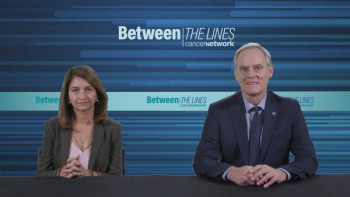
Sequencing Therapies in EGFR-mutant NSCLC
Dr. Husain discusses how anticipating resistance mechanisms and tailoring post-progression strategies based on initial therapy are key to optimizing sequencing in EGFR-mutant NSCLC.
Dr. Husain discusses how therapy sequencing has become more complex with the introduction of potent first-line combinations for EGFR-mutant NSCLC. He notes that clinicians must anticipate how early treatment decisions will shape second-line and subsequent options, particularly as resistance mechanisms diversify. Understanding these resistance patterns is crucial for selecting appropriate next-line therapies, such as targeted agents or chemotherapy-based combinations.
Dr. Husain discusses how post-progression strategies depend heavily on the initial regimen used—whether patients began on FLAURA-2 or MARIPOSA. Each pathway presents different molecular and clinical challenges upon progression. He explains that ongoing trials and translational research are working to define optimal sequencing strategies, including when to incorporate next-generation EGFR inhibitors or novel agents addressing resistance mutations.
Dr. Husain discusses how a forward-thinking approach to sequencing—guided by real-world data and molecular profiling—can extend disease control and improve survival outcomes. He emphasizes that clinicians should integrate CNS considerations, tolerability, and evolving resistance biology into each treatment decision.
Newsletter
Stay up to date on recent advances in the multidisciplinary approach to cancer.
















































































